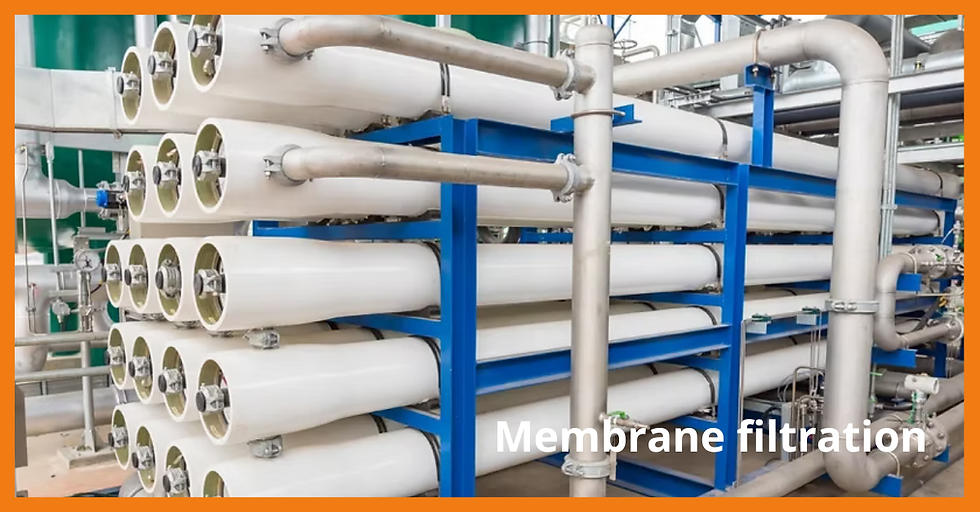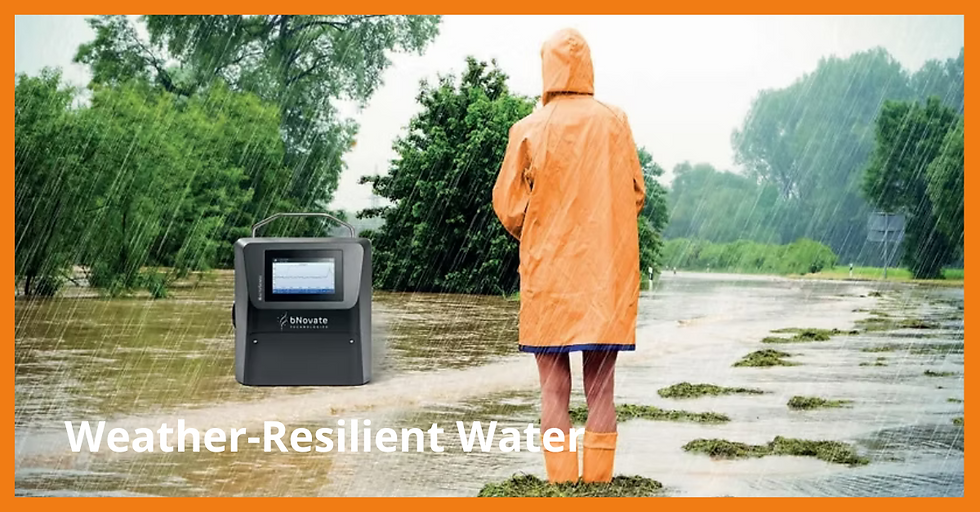BactoSense PURE’s primary validation for pharmaceutical water testing
- Martinique Jobin
- Jul 10
- 2 min read

In pharmaceutical manufacturing, ensuring the microbiological quality of water is critical for product safety and compliance.
While reliable, traditional methods like membrane filtration techniques and plating can be time-consuming and labour-intensive. BactoSense PURE offers a faster, automated alternative for detecting intact cells in pharmaceutical-grade water and is backed by primary validation to meet pharmaceutical standards.
With the 2023 EU GMP Annexe 1 update encouraging the adoption of rapid microbiological methods (RMM), validated technologies like BactoSense PURE are becoming essential for contamination control strategies (CSS).
Let’s explore the primary validation process, its results, and why this innovation is a game-changer for GMP-regulated industries.
What is BactoSense PURE?
BactoSense PURE is a 21 CFR Part 11 compliant flow cytometer designed for real-time detection of microbial contamination in pharmaceutical water systems.
Unlike traditional methods, it provides:
Faster results - minutes vs. days
Higher automation - reducing human error
Continuous monitoring capabilities - enabling tighter process control
The primary validation process
Primary validation ensures that an alternative method, such as BactoSense PURE, can perform at least as well as the compendial method, for instance, membrane filtration. This rigorous evaluation was conducted over two years by a consortium of experts, including:
bNovate Technologies (developer)
BWT AQUA (water treatment specialists)
Validation criteria & standards
The study followed key regulatory guidelines, including:
Ph.Eur.5.1.6. (European Pharmacopoeia)
USP <1223> (U.S Pharmacopoeia)
Key validation results
BactoSense PURE successfully met all pharmacopoeial performance criteria:
Table 1: Validation Parameters & Results
Parameter | Result | Comment |
Accuracy | Pass | Non-inferior to HPC |
Precision | Pass | RSD <30%, non-inferior to HPC |
Specificity | Pass | All species detected |
Limit of Quantification (LOQ) | Pass | Non-inferior to HPC |
Limit of Detection (LOD) | Pass | Non-inferior to HPC |
Linearity | Pass | Non-inferior to HPC |
Range | Pass | Non-inferior to HPC |
Robustness | Pass | Unaffected by changes |
Ruggedness | Pass | Unaffected by test variables |
Table 2: Microorganisms Tested (Specificity)
Species | Result | Comment |
Pseudomonas aeruginosa | Pass | Pharmacopoeial strain |
Bacillus subtilis | Pass | Pharmacopoeial strain |
Staphylococcus aureus | Pass | Pharmacopeial strain |
Stenotrophomonas maltophilia | Pass | USP <1231> |
Ralstonia pickettii | Pass | USP <1231> |
Burkholderia cepacia | Pass | USP <1231> |
Penicillium expansum | Pass | Mold |
Sphingomonas paucimobilis | Pass | Kulakov et al. (2002) |
Escherichia coli | Pass | Pharmacopoeial strain |
Candida albicans | Pass | Pharmacopoeial yeast |
Why this matters for Pharma manufacturers
The successful validation of BactoSense PURE means:
Regulatory confidence: Meets Ph. Eur. & USP standards, easing adoption.
Faster decision-making: Real-time data enhances contamination control.
Reduced risk: Automation minimises human error.
GMP compliance: Supports EU Annexe 1’s push for rapid methods.
Primary Validation Package
To simplify implementation, bNovate offers a comprehensive validation package, including:
Validation Master Plan (VMP)
Validation Summary Report (VSR)
Statistical Analysis Report
Performance Qualification (PQ) Support
This package helps manufacturers streamline validation and strengthen regulatory submissions.
The future of water bioburden testing
The primary validation of BactoSense PURE marks a significant advancement in water bioburden testing. By replacing slower, manual methods with automated, real-time flow cytometry, manufacturers can enhance efficiency, compliance, and product safety.
Book a demo to learn how to enhance your pharmaceutical water testing.










Comments